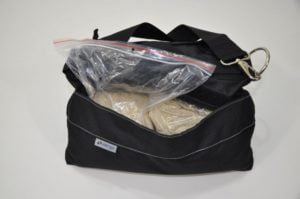Sandbags on the film set
Sandbags (also called dirt or sand) are basic tools on every film and photo set. Their weight usually ranges between 5 and 20 kg. As the most important acpect of work on the plan should be the safety of staff and equipment, using sandbags is a necessity. This sandbag tutorial explains how to use them properly.
Using sandbags
There are numerous nonstandard uses for sandbags, for example blocking doors. But since it’s so hard to describe all of them, here we present the few most common ones:
C-Stand
Using a C-Stand, always point the highest leg in the direction of the load. Place the sandbag on the highest leg before you connect any equipment to the stand. By doing this you ensure the safety of yours and the equipment you are about to mount. If one sandbag is not enough, place the next one closer to the stand’s riser.

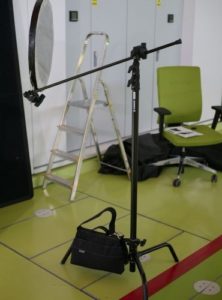


Tripod
Anchoring tripods is a bit more complicated because of their construction. Legs of tripods are not parallel to the ground, so if we put a sandbag on the leg, it will slip. In this situation we can put the sandbag between the tripod’s legs, or wrap the detachable strap around the column.
Counterweight on boom / tripod arm
You can connect the sandbag to the hook / loop at the end ot the arm, but what is even more intresting, the strap can be wrapped around the boom. Two or more sandbags can be connected into a set, using the snap-hook.
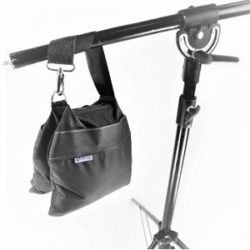
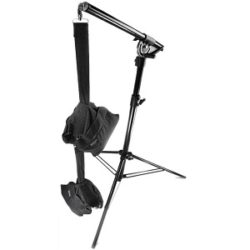
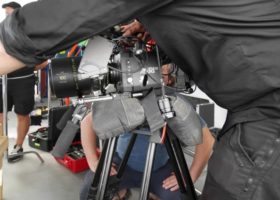

Camera support / Camera saddle
If you need to make a fast shot without setting up the tripod, put the camera on a sandbag. It will compensate unwanted vibrations and hand shaking. If you can’t get your tripod low enough, you can put some sandbags on the ground.
Buying sandbags
Before you choose to buy one, think how would you like to use it. Sandbags can differ and not all are great for every application. Here is some advice to help you make a good decision.
Quality and price
Prices starts at about €2 and end somewhere around €50 per piece. Before we started manufacturing sandbags, we tested many of them. The cheapest were destroyed after a few yanks. So buying the cheapest sandbags is not a good idea.
Fabric
Durability depends heavily on the fabric used. In cheap products there is polystyrene fabric that has low price, but will be damaged quickly. Good quality products use Nylon fabrics made from polyamides, e.g. „Cordudra®” from Invista.
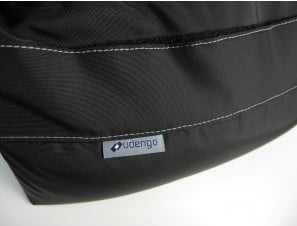
Handle
Handle sewn to the top layer of material will be easily ripped off with a single yank. Only 5-7kg of sand will act with great force on the stiches when lifting and putting the bag down on the ground. It is good when the handle is sewn to the bottom layers, so there is much smaller impact on the material.
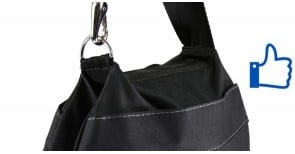
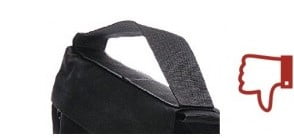
Detachable handle & solid snap-hook
It’s one of the basic features that every sandbag should have. When you grip sandbag to any equipment or when you connect a few sandbags into set, it’s really important to have a heavy-duty snap-hook.
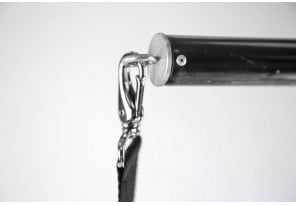
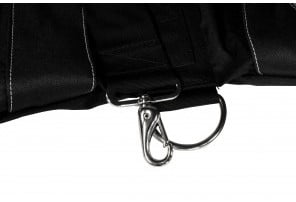
Sandbag design
When you use sandbag mainly on tripods you have to point out on sandbag construction. Gripping standard sandbags to tripods is hard because of construction of it’s leg (not parallel to the ground). It this case we can buy a dedicated donut sandbag, but… It’s pretty expensive and can be used only for tripods. You can also tie a standard sandbag, but it’s also not as good as using a sandbag with a detachable handle.
In good quality sandbags there is a steel plate sewn in the middle part. It makes the bag more stable and less flimsy.
Comfortable zipper handle
On a film set grips use gloves to protect their hands from dirt, scratches etc. In a good quality sandbag zipper should have a comfortable handle to use it with gloves
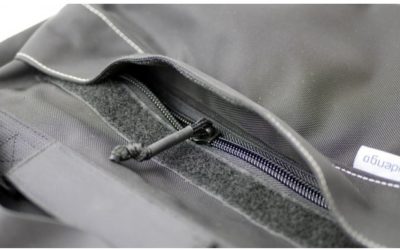
Delivery and service
Many cheap sandbags are sent from China and so the shipping can take even 4 weeks. In practice there is no possibility to return such product.
Look
Don’t forget to look professional. Your clients can misjudge your abilities, just because equipment you use doesn’t work or look good.
